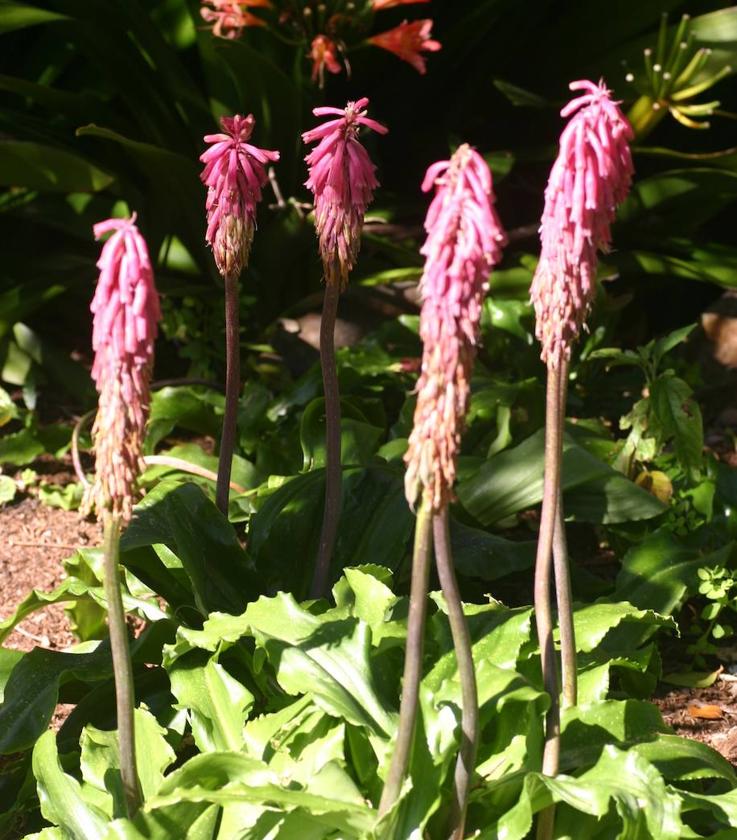Recommended for your garden in the south of Spain: Veltheimia bracteata
Native to the Eastern Cape of South Africa, Veltheimia bracteata is a deciduous perennial bulb which produces a rosette of fleshy, glossy strap-like leaves and tall flower spikes
The forest lily or winter red-hot poker, botanical name Veltheimia bracteata, is native to the Eastern Cape of South Africa. It is a deciduous perennial bulb which produces a rosette of fleshy, glossy strap-like leaves with wavy margins and tall flower spikes, up to 60cm high, of tubular flowers. The blooms are clustered together at the tops of the stems and can be various shades of pink or greenish yellow. Some may have greenish spots on the tips of the petals.
This plant is drought tolerant once established and can withstand light frosts. It is dormant during the hottest months of the year and flowers during winter and early spring, each flower spike lasting about a month.
An ideal location, whether it be in a flower bed or a container, would be where it receives partial or full shade.
After flowering, inflated seed capsules containing pear-shaped, black seeds around 6mm long appear. The forest lily grows easily from seed which needs to be harvested as soon as the pods are dry and papery. It can also be propagated from bulblets and from the leaves. A healthy leaf removed from the base of the rosette and planted in a sandy loam will form small bulblets at the base. They should flower after just one season.
The bulbs, once planted, are best left undisturbed and will benefit from the application of a slow release fertiliser during the growing season. They should not be watered or fed during the dormant period (summer, when the leaves have died right back) as the bulb may rot.
Veltheimia bracteata is named after the patron of German botany, Ferdinand Graf von Veltheim (1741-1801). The specific epithet is from the Latin 'bractea' meaning 'with bracts'.
The genus has only two species, V. bracteata and V. capensis although there are several synonyms.

